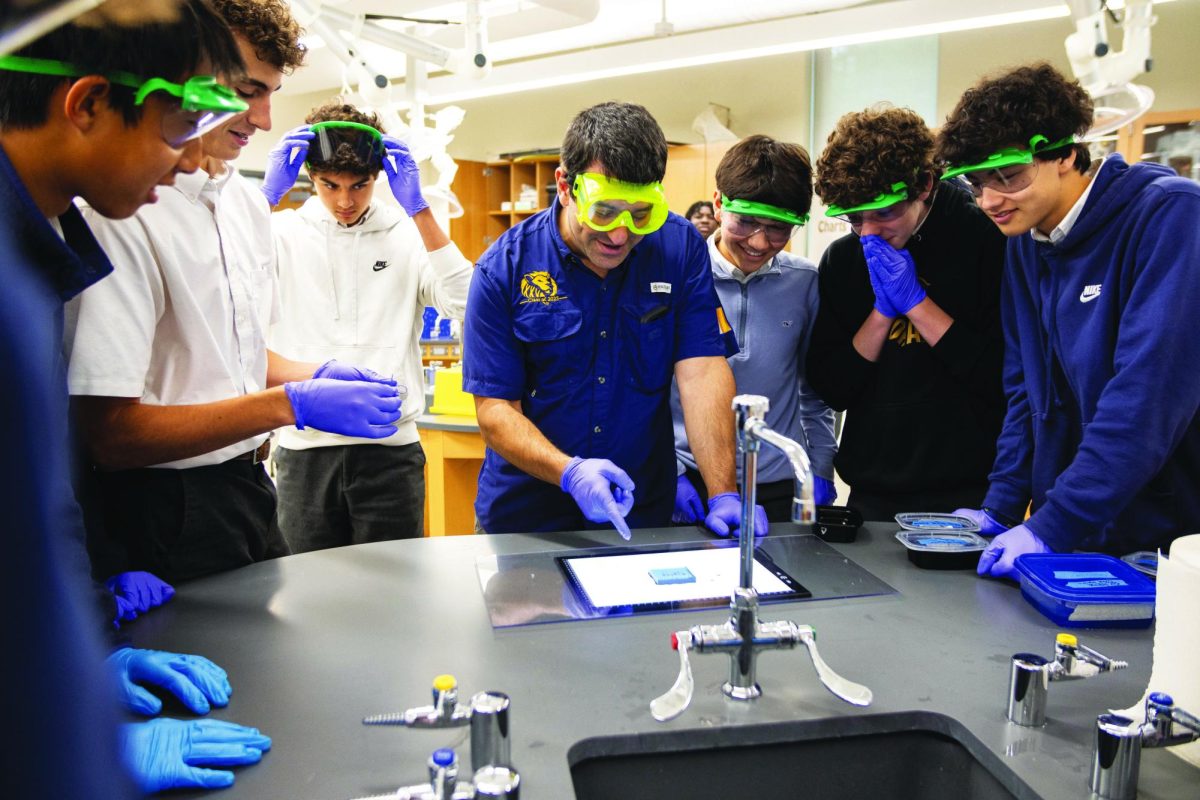During their time in high school, students are often more preoccupied with what grades they receive than what knowledge they can take with them from each class. Cramming for hours may sometimes seem like the most efficient study method because, in the moment, a good transcript appears much more valuable than any real understanding of their subject.
As a result, engaging methods of instruction are crucial for teachers to prevent students from falling behind. While each teacher has their own approach, the essence of teaching remains the same.
For Nancy and Jeffrey Marcus Master Teaching Chair Bruce Westrate, lectures embody the essence of teaching — students learn a lot more material, creating a body of knowledge that can be used to draw analogies or perform analysis on the spot if need be.
“In lectures, it’s content driven,” Westrate said. “Discussions are well and good, and I have them in my class all the time, but in terms of acquiring historical knowledge, you really have to acquire it (through lectures).”
On the other hand, history instructor Jerusha Westbury believes lectures lead to poorly internalized knowledge because students aren’t as actively engaged.
“There have been some studies that have focused on student learning,” Westbury said. “And it’s really interesting that students tend to perceive they learn more from lectures, but when they’re tested afterwards, they’ve actually retained a lot less than they think. It’s just going into a temporary bank versus being stored long-term.”
Instead, Westbury believes that students must analyze history through a broader lens to acquire a deeper understanding of the material.
“I’d prefer my students think of history in terms of big picture changes or as a narrative framework,” Westbury said. “When they get to college, and they’re taking classes that are more focused on specifics, they’ll hopefully be able to remember the big idea of what’s happening in the world so they can go more in depth.”
However, Westrate believes that without the hard facts learned from a lecture, good discussion is not possible.
“If you just had the story and nothing else, it would be like just having a skeleton there,” Westrate said. “If you just try to analyze some facts for which you have no story, you just have a pile of mush on the floor. So, we try to put them together to give students more complete results to draw from later on.”
Both teachers agree their style of teaching aims to prepare their students for work beyond the classroom, but the additional skills each style provides students with are vastly different. Although both styles contain some degree of both note-taking and conversations, the lecture method stresses the importance of pen and paper.
“Lectures require students to master the skillsets for note-taking that they’re going to need as you go forward,” Westrate said. “Many students are only introduced to this requirement for the first time when they come into my class.”
In contrast, the discussion method stresses the importance of one’s voice.
“The main benefits are for student retention, but there’s also a social component to it,” Westbury said. “You can tell when people are zoning out; part of it is learning the social skill of how to look interested, even when you’re not.”
Along with developing these beneficial skills through their teaching styles, both teachers want to develop students’ abilities to think, as they believe teaching is more than just imparting academic knowledge.
“I want my students to think about my class as a place where you craft understanding together rather than as a place to show how smart you are,” Westbury said.
In a student-focused classroom, the responsibility lies on the student to form views about the world, using their body of knowledge to guide them.
“I try to make my class interesting and fun for my students,” Westrate said. “It isn’t just a dry lecture all the time—we stop and we talk and joke around. But of course, in the end, that’s not my goal. My goal is to turn them into slightly more serious people in terms of the way they’re able to look at the world, because there is no better way to fix ignorance than through history and knowledge.”
Sophomore Ailesh Sadruddin has had hands-on experience with both methods of teaching throughout his two years in high school, and has personally found he retains knowledge better through discussion-based learning.
“During discussions, you’re more engaged in the class,” Sadruddin said. “And if you have more of an idea of what’s going on, you’re able to keep talking with the teacher and your other classmates, and that lets you get a better sense of what you’re learning.”
But instead of wondering what teaching style fits the students, it might be worth asking about what fits the teachers.
“You have teachers who are fun to listen to,” Westbury said. “I love listening to Dr. Westrate talk about history—it’s like a fun story. And I don’t want to talk that much, I would find it exhausting. I feel like my students would get tired of hearing it because I don’t have that sort of natural storytelling ability.”
The art of engaging students
As timeless teaching methods, such as lectures, are compared against discussions around the Harkness table, teachers are forced to weigh the pros and cons of each to provide the optimal learning experience for students.
Oliver Peck, Joshua Goforth
March 8, 2024
Categories:
Various methods of teaching, including Harkness, Socratic and lecture, can differently affect a student’s engagement and retention.
More to Discover
About the Contributors
Oliver Peck, Editorial Director
Joshua Goforth, Art Director






